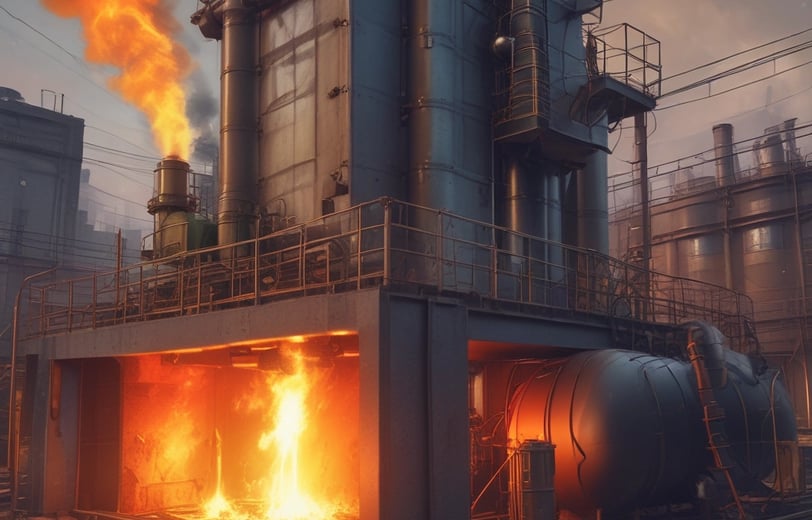The Pyrolysis Process: Turning Waste into Gold Explained Simply!
What is the Pyrolysis Process? 🤔 Learn how Veera Group's game-changing technology turns plastic and tyre waste into valuable fuel. A simple guide to modern alchemy!
Veera Group
7/3/20252 min read


Introduction to Pyrolysis
We see it everywhere: mountains of plastic waste and old tires with seemingly nowhere to go. It can feel like an unsolvable problem, right? But what if we told you there's a powerful and proven technology that can essentially hit the 'undo' button on this waste, turning it back into a valuable resource?
That technology is called pyrolysis, and it's a total game-changer for modern recycling. Forget what you might imagine about complex chemical engineering. The pyrolysis process is simpler than you think and offers an innovative solution to waste management.
Understanding the Pyrolysis Process
So, what exactly is the pyrolysis process? In simple terms, pyrolysis is the thermal decomposition of organic materials at elevated temperatures in the absence of oxygen. This means that when waste materials, such as plastics and rubber, are subjected to high temperatures without oxygen, they break down into smaller molecules.
The outcome of the pyrolysis process can vary, but it typically produces a mix of gases, oils (often referred to as bio-oil), and char. These by-products can be transformed into energy or other valuable products. Therefore, instead of simply sitting in landfills, plastic waste can be converted into usable resources, like fuel oil and carbon black, all through the strength of pyrolysis.
Benefits of Pyrolysis in Waste Management
The benefits of the pyrolysis process extend far beyond just removing waste. First, it significantly reduces the volume of waste that would otherwise end up in landfills. Given the growing global concern over waste management, this is an immensely valuable contribution.
Moreover, pyrolysis allows for the recycling of non-recyclable plastics, reducing reliance on fossil fuels by producing oils that can be used as an alternative energy source. This not only helps in conserving existing resources but also contributes to reducing greenhouse gas emissions.
Additionally, the char produced can be used as a soil amendment or in construction, making it a versatile product. With these diverse applications, the pyrolysis process indeed turns waste into gold, showcasing its potential for sustainable development and environmental protection.
The Three Key Ingredients
The magic of the pyrolysis process really comes down to three key things:
The Waste: It starts with a steady supply of shredded plastic or old tyres.
The Heat: An industrial reactor heats the material to high temperatures, typically around 400-450°C.
No Oxygen: This is the secret sauce! The airtight reactor ensures the material decomposes thermally instead of burning.
The Step-by-Step Journey from Plastic to Fuel
So what does the process look like in action? It's a straightforward journey.
Preparation: First, the waste plastic or tyres are shredded into small, manageable pieces to ensure they heat evenly.
Heating Up: The shredded material is fed into the airtight pyrolysis reactor.
Vaporization: As the reactor heats up, the solid material turns into a hot gas (hydrocarbon vapor).
Cooling & Condensing: This hot gas is channeled through a series of cooling pipes. As it cools, it condenses back into a liquid—and just like that, you've created valuable pyrolysis oil!
Conclusion: Embracing Pyrolysis for a Cleaner Future
As we look towards a cleaner and more sustainable future, the pyrolysis process stands out as a beacon of hope. This innovative technology not only addresses the growing problem of plastic waste but also paves the way for new renewable resources. While the concept may be new to some, understanding the pyrolysis process and its applications can empower us to make smarter decisions about waste oil to Diesel management.
By embracing pyrolysis, we can transform the way we view waste from something disposable and waste energy machine undesirable into valuable resources. It's time to turn our mountains of waste into mountains of opportunity!
